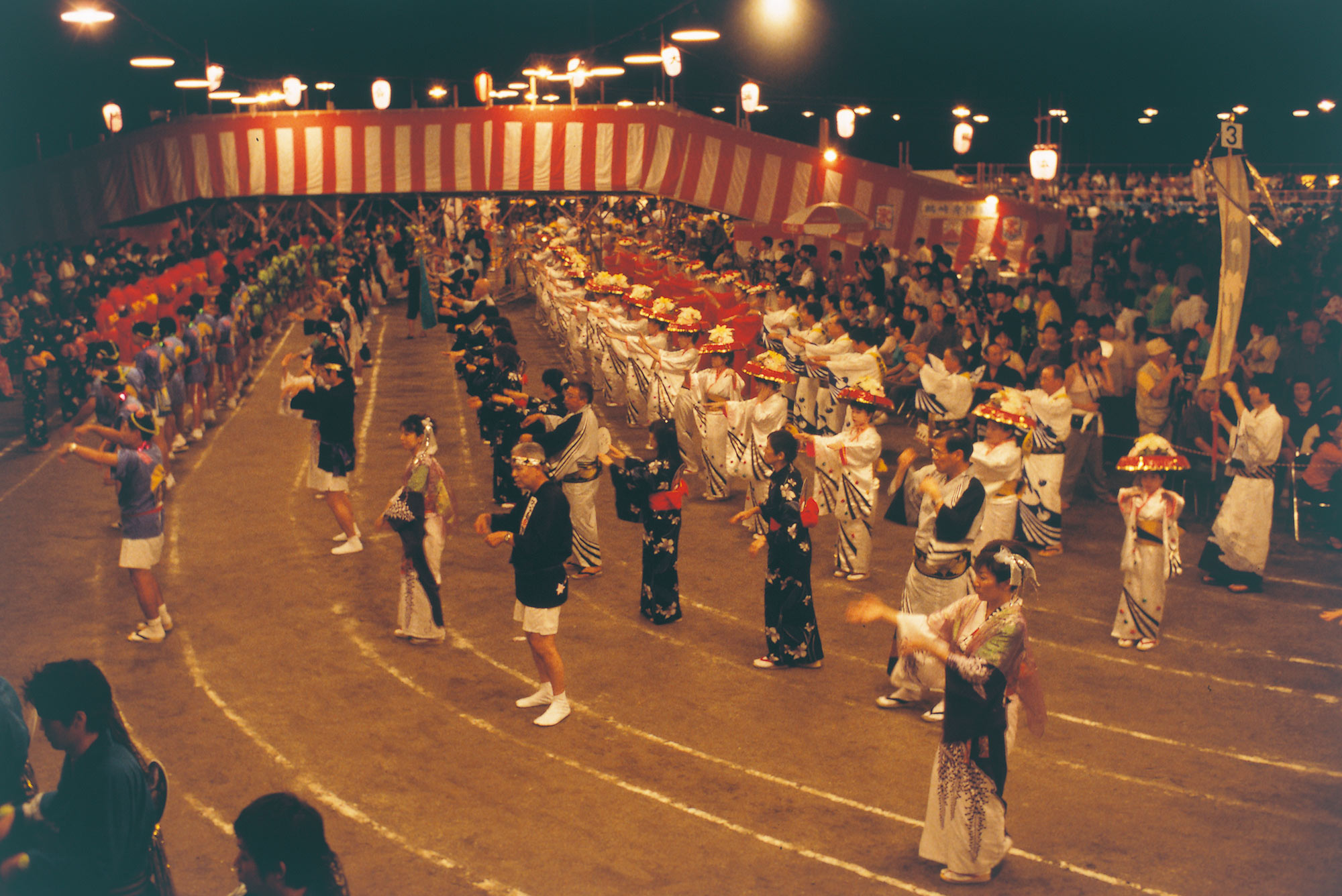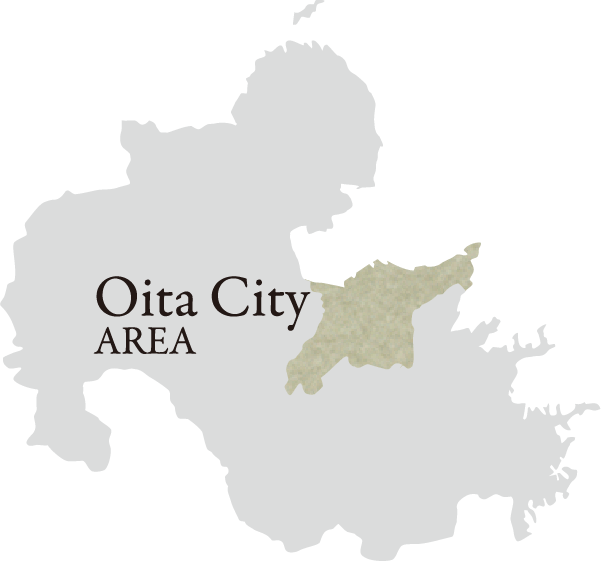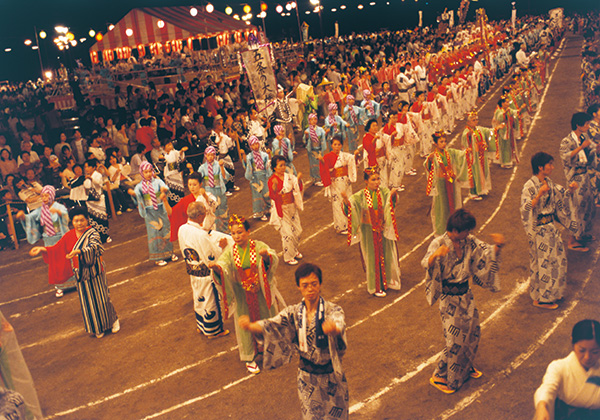

- City of Oita
- Traditional Arts・Festival
Tsurusaki Dance
Photography/ISHIMATSU Takeo
Dazzling Beauty that Earns Reputation
Midsummer night is a dancing season in Oita Prefecture. Just as Himeshima Bon Odori Dance, many of the dances started as celebratory memorial services for the bon festival. Even today, the tradition of memorial services for the ancestors remain strong mainly in the farming and fishing villages, as there are nearly a hundred types of dances in the prefecture.
The Oita area during the Edo period was divided into small clans and there was very little interaction between them, so that could be why each district developed their own distinctive dancing culture. Among them, some dances were developed which represent Oita and went on to perform internationally. The Sensu Dance of Tsukumi, characterized by the elegant fan movements, as well as the Kusaji Dance of Bungo Takada, which moves in a fast tempo and rhythm, are some examples. Then there comes the Tsurusaki Dance.
The Tsurusaki Dance has a legend that it came from the dance of the Shogunate introduced by the chief vassal, in order to calm his bad-tempered-then Lord of Bungo, Yoshishige Otomo (later Sourin Otomo). Its elegance seems just like the capital, and it was always regarded as “Bungo Specialty at its Highest.”
There are two contrasting repertoires of dances, the slow and elegant “Sarumaru Dayu” and the up-tempo and nimble “Saemon.” The older piece is the Saemon, which originates back long enough so Sourin would be a reference, whereas Sarumaru Dayu is said to be something that was brought back to Bungo from Ise when visiting the Ise Shrine became popular in the Edo period.
Currently the main dance is the Sarumaru Dayu. This is probably because it stayed in line with the taste of the people of Tsurusaki, who are financially well off and have artistic sensibility.
Tsurusaki was a harbor city of the Higo clan, with 540,000 koku (unit of volume of rice produced on the land) during the Edo period. It was not only the arrival and departure port of Sankin Koutai (the Alternate Attendance Policy to have feudal lords all over the country spend a few months at a time in Edo) with the road connecting to Kumamoto, but also the base of politics and economy for the clan, connecting to the Seto Inland Sea and onto Kansai. The neighboring Funai clan only had about 20,000 koku, therefore most ships going the inland sea route stopped over at Tsurusaki.
Naturally, this made the people in Tsurusaki prosper. It also boosted their self-esteem. The luxurious costumes and refined dance were all supported by the prosperity. Their confidence “Come and I will show you” also comes from that. Nowadays, it is the members of the “Tsurusaki Dance Preservation Society” who support the community and develop the dance with steady effort.

Tsurusaki Dance offers two contrasting repertoires, the slow and elegant "Sarumaru Dayu" and the up-tempo and nimble "Saemon."

